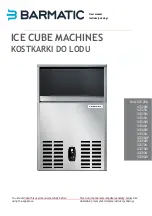
87
3. thE GRinD
The coffee beans should be finely ground, but not too fine. The grind size will
affect the rate at which the water flows through the coffee grounds in the filter
basket and is crucial to the taste of the espresso.
If the grind is too fine (looks like powder and feels like flour when rubbed bet-
ween fingers), the water will not flow through the coffee, even when under high
pressure. The resulting espresso will be over extracted, very black and bitter in
flavour.
If the grind is too coarse the water will flow through the coffee grounds in the
filter basket too quickly. The resulting espresso will be under extracted, lacking
in colour and flavour.
4. COFFEE DOSE, tAmPinG AnD PRESSuRE
Please observe the instructions which have already covered this in the respective
chapters (page 74–75, page 81–82).
In general:
A truly great espresso is a balance of sweet, bitter and sour. The flavour of your
coffee will depend on many factors, such as the type of coffee beans, roasting
temperature, freshness, coarseness or fineness of the grind, dose of coffee
grounds and tamping pressure. Experiment by adjusting these factors to achieve
the perfect flavour for you.
If you also watch the pressure on the pressure gauge, nothing stands between
you and a perfect espresso.
5. COFFEE
Use freshly roasted coffee beans, with a “roasted on” date and use within 2 weeks.
We recommend to grind beans immediately before brewing as coffee grounds
quickly lose their flavour and aroma.
Store coffee beans in a cool, dark, airtight and dry container. Vacuum seal is
recommended.
Buy coffee beans in small batches to reduce the storage time and store no more
than one weeks supply at any time.
Downloaded from www.vandenborre.be












































